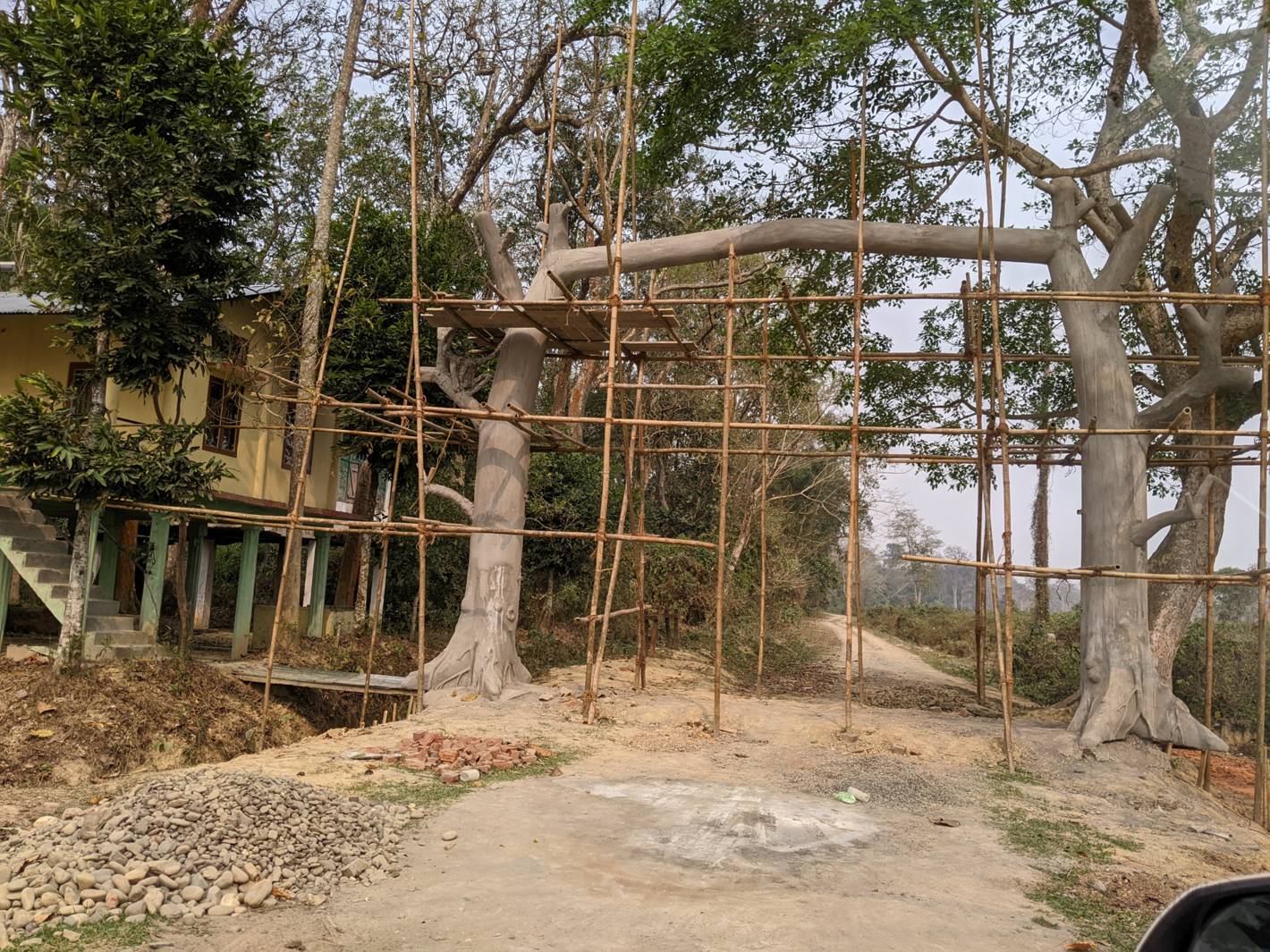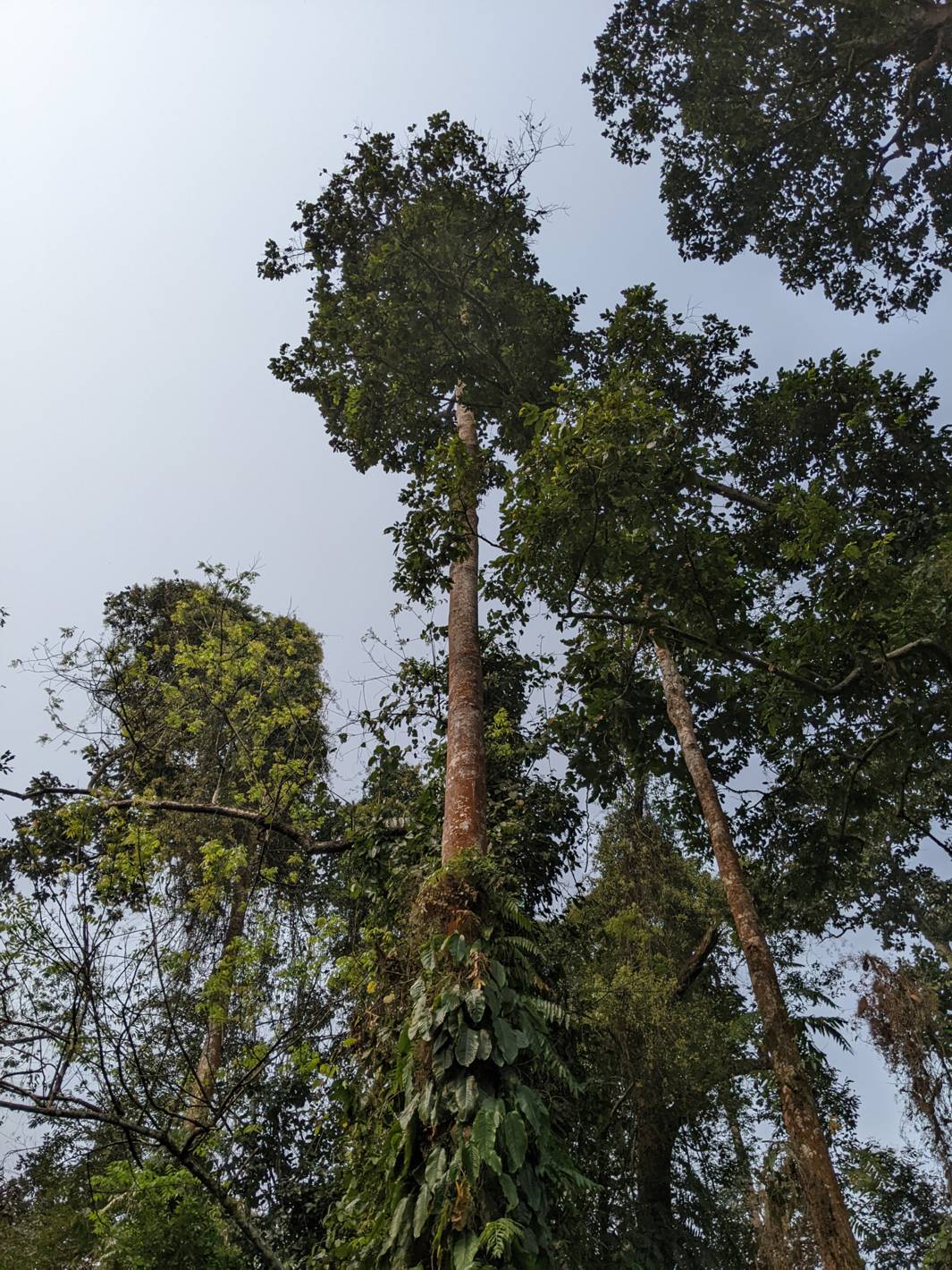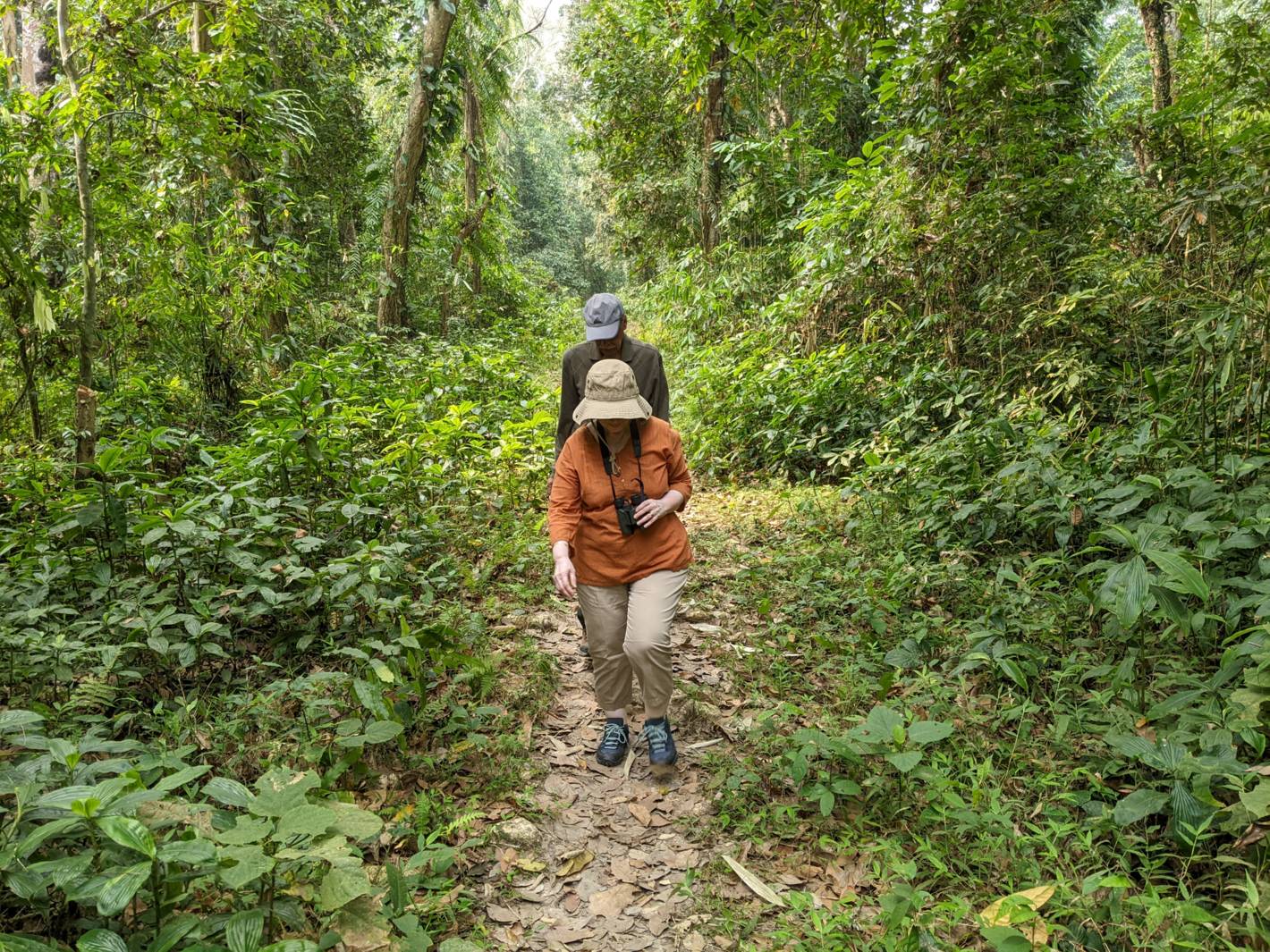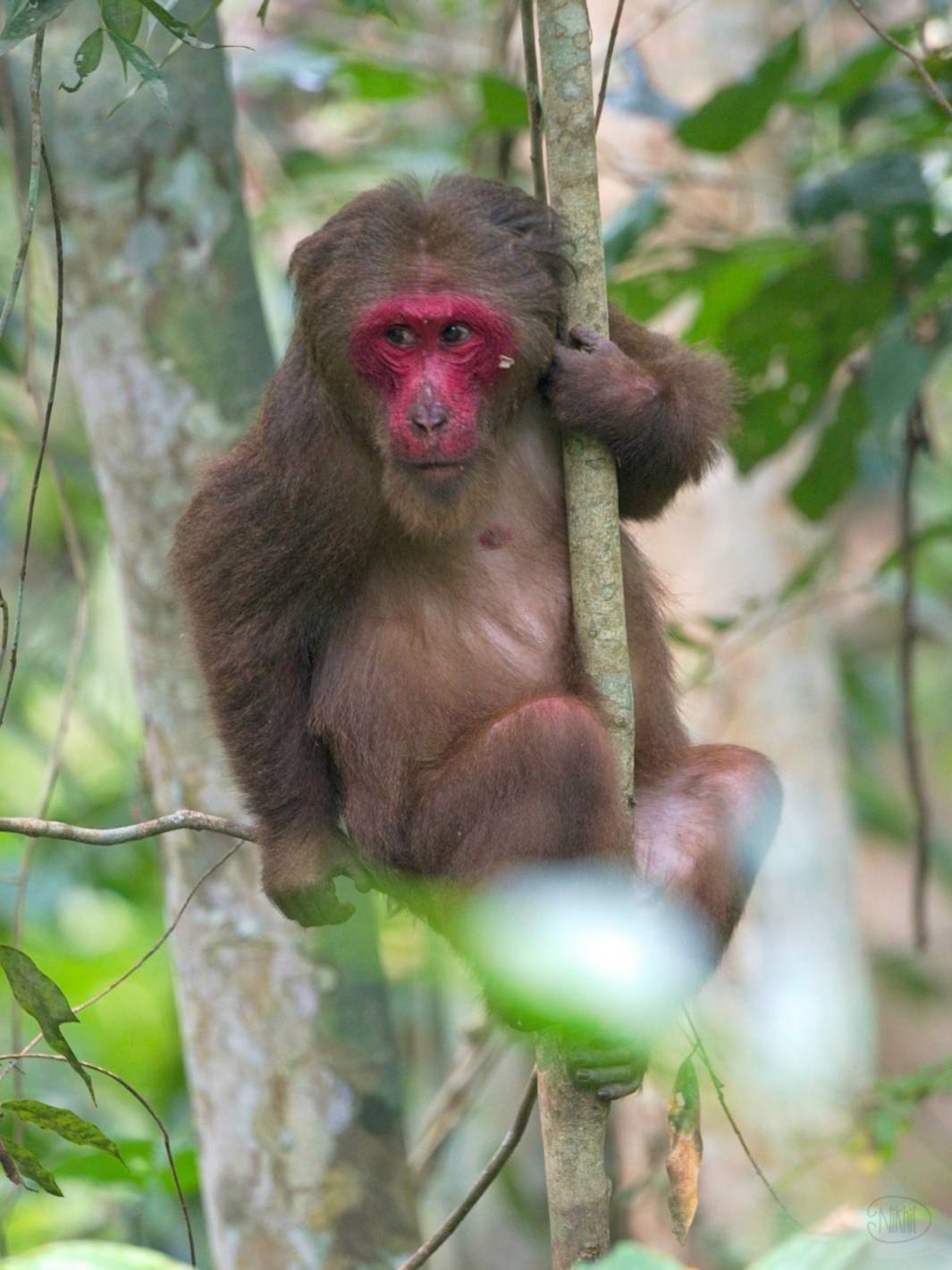March 6, 2023, Morning
This day deserved better planning and also better expectations-setting by our guide. It was our day to see the only ape species in India (other than humans of course): the Hoolock Gibbon, listed as one of the most endangered primates in Asia by the World Land Trust.
I should say that my friend Adesh Shivkar had advised me before traveling how they arrange their own tours by staying overnight in Jorhat so that they are in the Gibbon Sanctuary at first light and hire the best of the local guides to see the gibbons. This was after I had arranged for our guide and made bookings. It was too late to change now, so we went ahead with what our guide had planned for us.
Getting There
We were staying in Kaziranga village, and the sanctuary is about a 3 hours’ drive away. For reasons, our guide planned on us leaving Kaziranga at 6:30 in the morning, seemingly confident that we would still get to see the gibbons on reaching the sanctuary. After stopping for breakfast briefly at Jorhat, we reached the sanctuary only by around 9:30 in the morning. Travel to/from Kaziranga revealed some things which travelers doing a similar journey ought to know about.
We saw no open restaurants early in the morning on this road. The highway going to Jorhat is in good condition for the most part. When villages are encountered along the way, they are very dense and underdeveloped localities, with heavy traffic starting around 8 a.m. We also didn’t find any decent breakfast options in Jorhat, atleast not on the route to the sanctuary. Roadside stalls were plenty, but a decent place to sit down for food was hard to find. Carrying your own food and drink wouldn’t be a bad idea. And I don’t remember any toilet facilities before reaching the sanctuary. So be prepared to not use a toilet for 3 hours when traveling from Kaziranga, in the worst case.





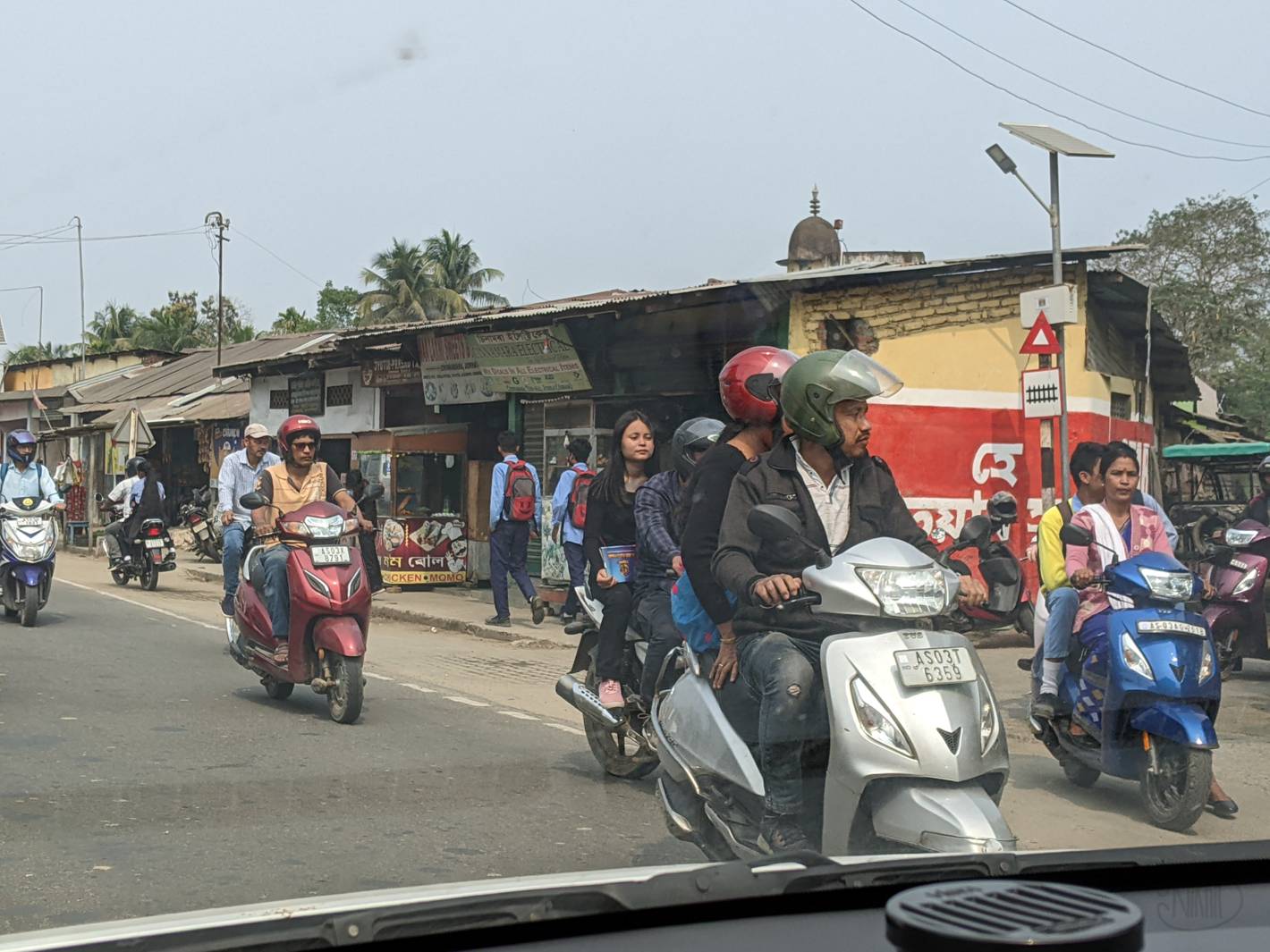





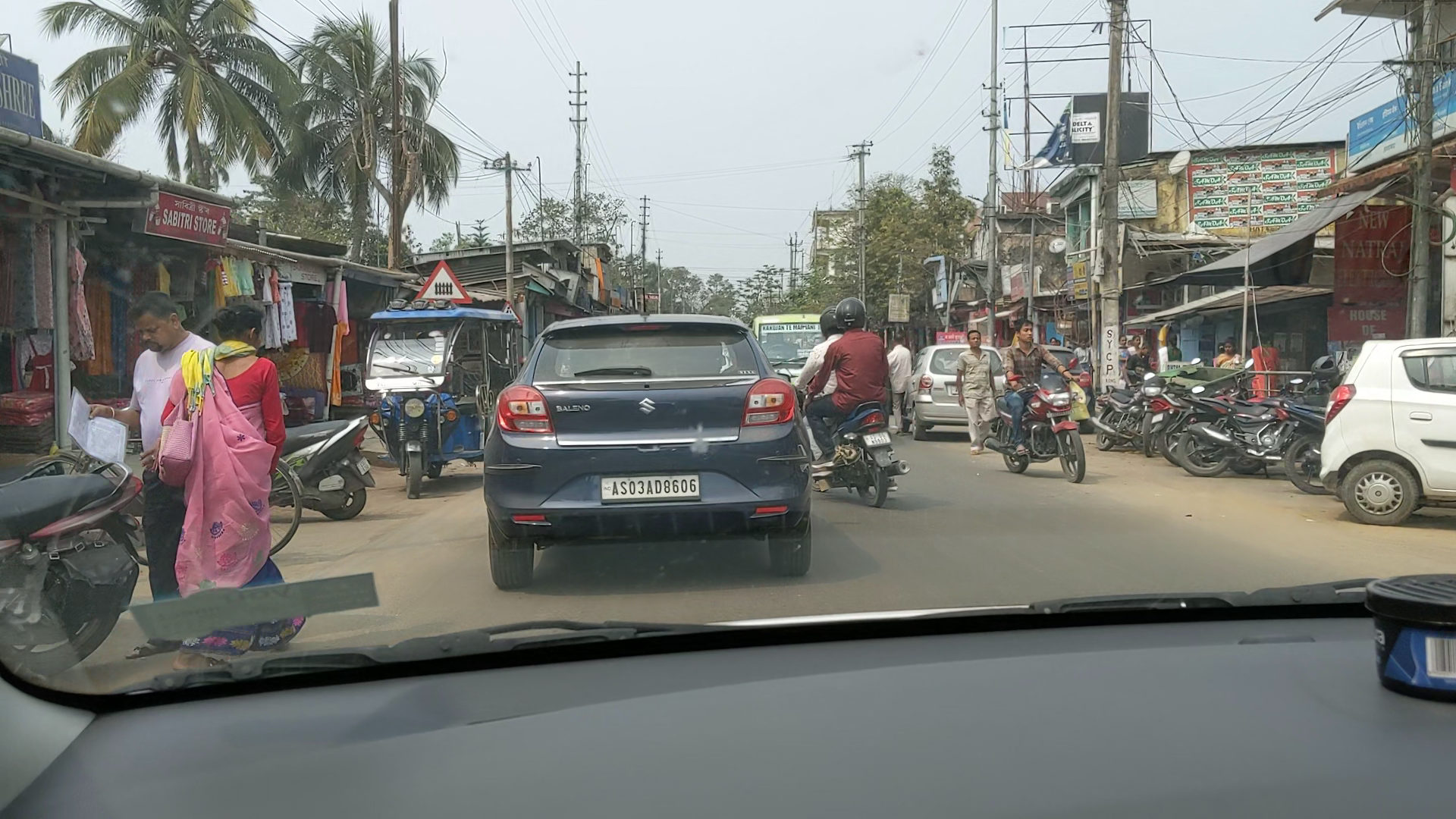

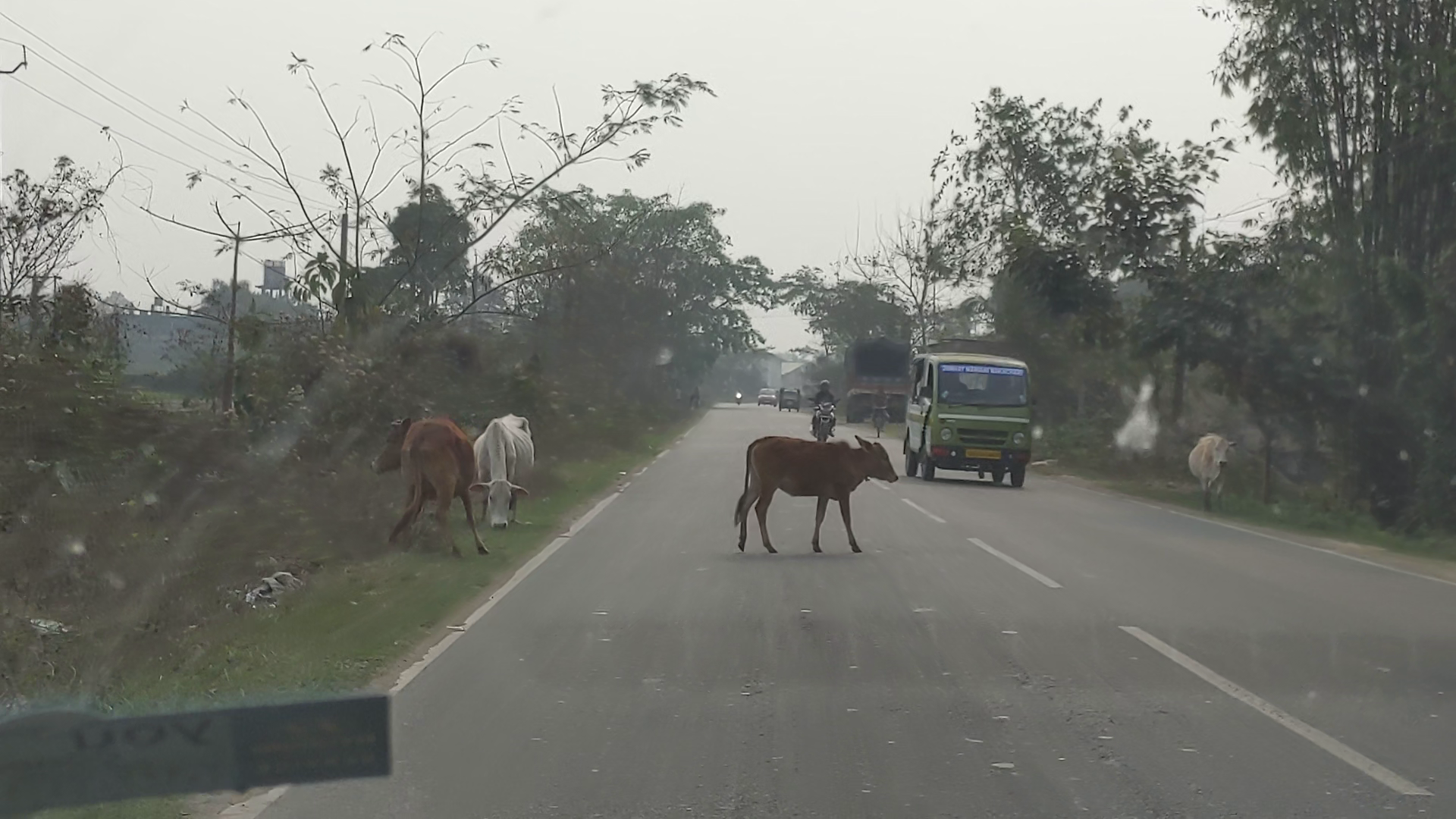
On Reaching the Sanctuary
The moment I got off the car, I felt a sense of lost opportunity for not reaching here earlier in the morning. What I saw around me was a dense forest with tall trees and lush vegetation. A few steps into the park, one of the forest guards or volunteers randomly blurted out to me that the gibbons were near the gate until only recently, but had since disappeared into the forest. Oh, well. Our guide finished the formalities to enter the park. He had made arrangements for a local guide and an armed guard (both I believe are mandatory) to accompany us on our forest trail. To my mind, this was a rare opportunity to venture into a forest on foot. Most, if not all, tiger reserves in similar wildernesses mandate that you be inside a vehicle at all times. It reminded me of birding in Panama.
I should also note that the toilet in Gibbon Sanctuary, while a lot better than the “toilets” in the forest in Kaziranga park, does have some issues of its own. No running water in the wash basin. No toilet paper. No lights; it is nearly pitch dark inside after closing the door. And there are bugs like moths inside. So, some toilet paper and hand sanitizer would be a good thing to carry along when visiting here. And definitely learn to use the torch in your phone.
Route
I do not know how deep the trail system goes. We walked on two trails that go at somewhat of a right angle, walking about a kilometer on each and then turning back before the end of the trail was reached, for a total of 4 kilometers of walking.
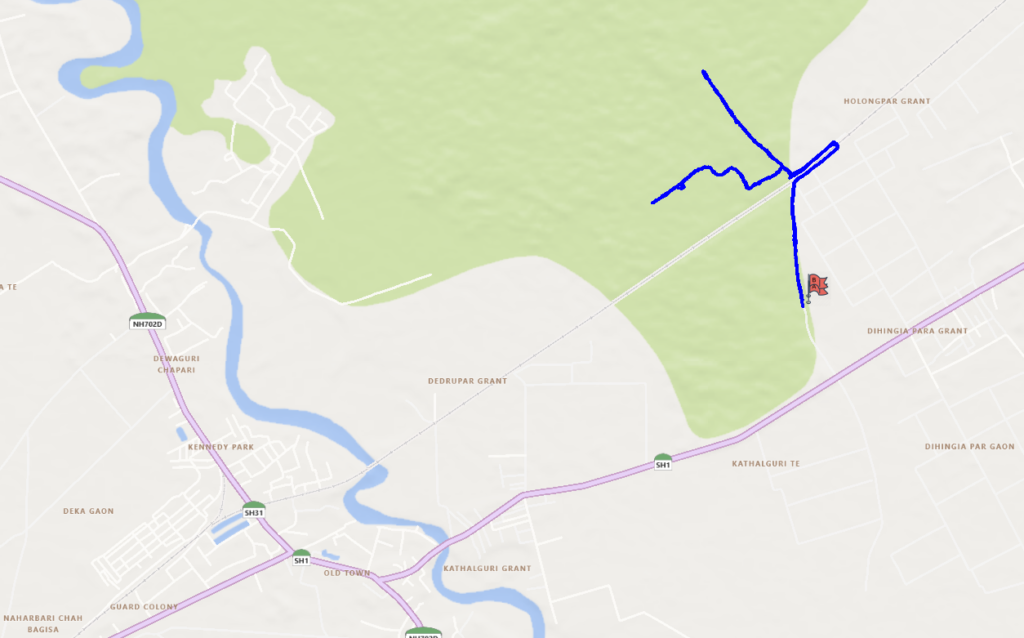
Sightings
The forest was quiet and there were not a lot of birds to be seen at this hour. We did see Abbot’s Babbler and several Scarlet Minivets, and also surprisingly a familiar species of bulbul, the Red-whiskered Bulbul. Later, we encountered a few Stump-tailed Macaques, including a few young ones. This species is listed as vulnerable by the IUCN. We also ran into a Pig-tailed Macaque (possibly more than one). At some point on one of the trails we heard an interesting call coming from deep within the forest, which the local guide identified as Hooded Pitta. However with no way to verify I have not counted it. The call was unique though, at least something I had not heard before. In total we spent just around 2 hours in the forest, never encountering the Hoolock Gibbons, after which it became unbearably hot and we headed back to the main gate, and then drove back to Kaziranga. The forest appeared to have a lot of potential for wildlife sightings, and we had barely scratched the surface. Still, I’m glad we visited.
Here is the complete eBird checklist.
Lessons Learnt
If I had to visit the Hoolongapar Gibbon Sanctuary again, I would do a few things differently. I had not considered how different this habitat was from Kaziranga, i.e. the potential to see quite different species here. For this purpose, reaching here early in the morning, whatever the cost may be, would be worth it. As it is we did nothing else for the rest of the afternoon after reaching back to Kaziranga. For around 6 hours of to and fro travel, we had gained just 2 hours of wildlife watching time.
The other thing I hadn’t considered was how rare it is to have the opportunity to be able to walk in such a forest. Here was a chance to truly experience the forest, which has wild elephants, water buffalo, and leopards on foot, a bit (and just a bit) like how it used to be several decades ago. It adds a small thrill factor along with a more memorable experience.
Lastly, our guide was clearly not familiar with this sanctuary or its local conditions, and my own experience should have kicked in to override his planning here. Anyway, that’s something to remember for next time. Having mulled this over that night, we in fact decided to revisit this sanctuary a couple of days later.
Photos and Media


